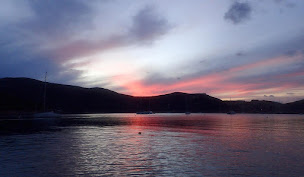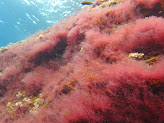This Project is part of the research in the Spanish National Parks Network of the OAPN (Autonomous Organization of National Parks). Our studies focus on communities and ecosystems of two National Parks with marine domain: the Cabrera Archipelago National Park and the Atlantic Islands of Galicia National Park. In these parks we study and monitor biodiversity in different communities to know its status and evolution, with special attention to invasive algae proliferation. The information gathered in our study is a tool for the management and conservation of the park ecosystems.
Cabrera Archipelago Maritime-Terrestrial National Park, Balearic Islands
Located in the Balearic Mediterranean, the Cabrera Archipelago is a group of islands ( 19 islands and islets) that was declared National Park in 1991. Currently this Park occupies about 90.000 hectares of which 98% correspond to sea waters and beds. Being a group of islands with practically no inhabitants, the archipelago has a high natural value and the landscapes and ecosystems that we can find are much less altered and better preserved. It’s a place of high natural value that shelters many species and ecosystems of both terrestrial and marine interest, which is why it is included in different protection programs such as Natura 2000 Network, Special Conservation Zone, ZEPA (Protection of birds) and many others.


A great variety of communities, ecosystems and species of high economic, ecologic and biodiversity interest can be found in the waters of this Natural Park. Some examples are the communities of Seagrass meadows such as Posidonia oceanica , infralittoral communities of rock walls, coralline bottoms and detrital bottoms, among other communities
Atlantic Islands of Galicia Maritime-Terrestrial National Park
Located on the Atlantic coasts of Galicia, this National Park includes the islands and archipelagos or Ons, Cíes, Sálvora and Cortegada, with an area of about 8.500 hectares of which more than 80% are marine. Our project is carried out in the Cíes archipelago, made up of three islands, near the river mouth of the Ría de Vigo.
These islands are home to a large variety of both terrestrial and marine biodiversity. The influence of ocean currents such as the Gulf Current, the influence of tides, the richness of the waters and the resulting oceanographic conditions result in seabeds and seawaters with a great variety of ecosystems and communities with high species richness. Landscapes and ecosystems, both marine and terrestrial, are characterized by climate conditions and proximity to the sea.

Atlantic islands Map and photo of Cíes islands.
Some of the interesting biodiversity that we can find in these islands include extensive colonies of birds that nest on the cliffs, a great variety of fish that live or breed in these waters, more than 200 types of algae that form different communities (such as kelp forests), Maerl bottoms, intertidal zones with barnacles and mussels, lagoons, seagrass areas, and other communities and ecosystems with great importance for biodiversity.
National Parks and the BigPark project
In Cabrera Archipelago National Park we continue to monitor and study different benthic communities influenced by the arrival of invasive algae using genetic and ecological techniques. An ecological monitoring of the benthic communities began in 2005 in this National Park and, with this project, we extended the time frame of the dataset to a series of more than 15 years. To accompany this ecological monitoring, we also follow up with the continuous environmental data recording (temperature) with a time series started in 2007. More recently, in 2014, a genetic study using metabarcoding techniques of benthic communities was started in the Park. Both genetic and ecological monitorings assess benthic communities influenced by invasive algae. The ecological study aims to characterize the abundance and coverage of different invasive algae (Caulerpa cylindracea, Lophocladia lallemandii, Asparagopsis taxiformis and Halimeda incrassata among others). A monitoring of the main herbivores (Sarpa salpa, Paracentrotus lividus and Arbacia lixula) is also conducted to ascertain their effect on the benthic communities and how they affect the invasion of these foreign algae. We have also started a study and monitoring of the Posidonia oceanica seagrass beds, and the impacts on these communities caused by strong storm episodes such as the recent Gloria storm (January 2020). In these meadows, we intend to determine their state after this severe storm and the direct and indirect effects on the ecosystem services that they provide such as carbon storage, protection of the coast, refuge for biodiversity, etc. For the genetic study, we take samples of different communities influenced by invasive algae in photophilic and sciaphilic environments, plus the seagrass habitat, to determine the biodiversity in the communities using massive DNA sequencing.



Communities with invasive species (Caulerpa cylindracea, Lohocladia lallemandii, Halimeda incrassata y Asparagopsis taxiformis) in Cabrera Archipelago.
In the Cíes islands, a genetic monitoring of benthic communities began in 2014 with the project METABARPARK, where the sampling and sequencing methods for these complex hard-substrate communities was tested. In this National Park we monitor different photophilic and sciaphilic communities with and without invasive algae. We study shallow macroalgal forest communities with and without the influence of the invasive alga Aspargopsis armata, as well as sciaphilic communities and rhodolite beds (Maerl), characteristic of these islands. With this project we extend the time series of genetic data on these islands in order to analyse the evolution and biodiversity of the different communities studied.

Community invaded by Asparagopsis armata and Maerl bottoms (Cíes islands, Atlantic islands of Galicia National Park)








